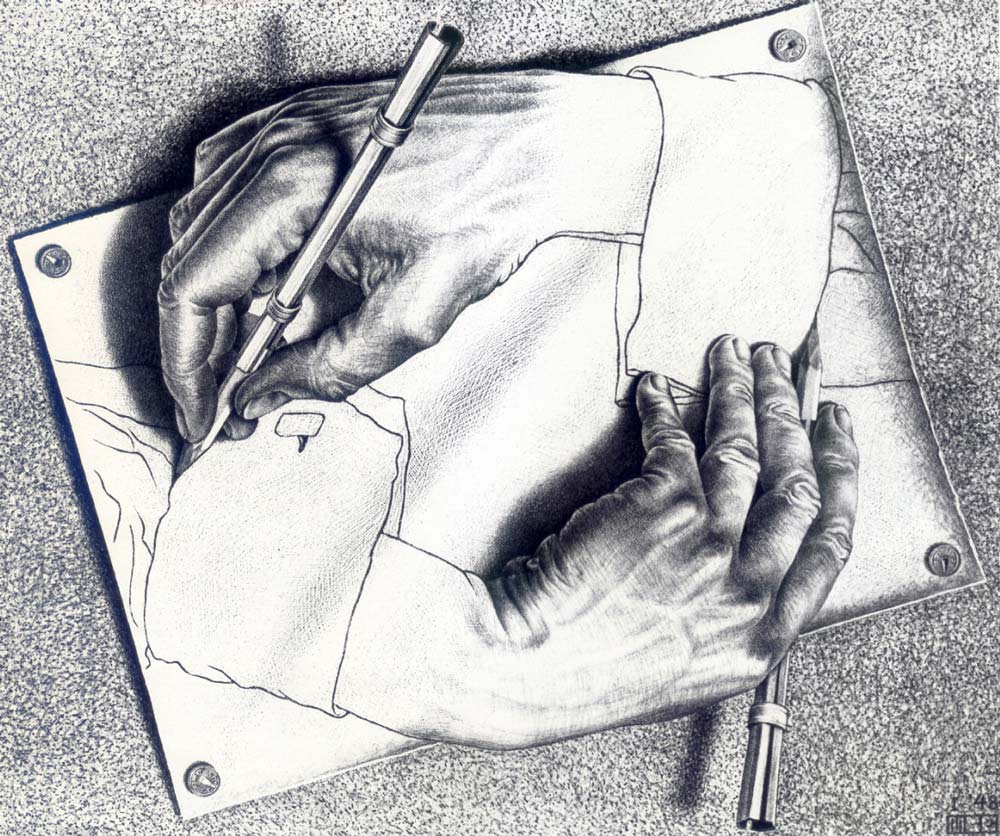
 MC Escher - Still Cutting Edge
MC Escher - Still Cutting Edge
Other | Monday 2nd November 2015 | Joe
The new exhibition of Escher's work at the Dulwich Picture Gallery proves the contemporary appeal of an artist who has made his own mark on music without so much as playing a single note. M.C. Escher - an architect and artist of international acclaim, not the birthday party disc-jockey that his name might suggest - has been a source of inspiration for countless album artworks since the mid-twentieth century. Here we take a look at the reasons for this remarkable following.

Maurits Cornelis Escher rose to fame as a print-maker, graphic artist and architect in his native Holland during the modernist surge of the early twentieth century. His work was applauded for its mathematical precision, its sense of perspective, and its quirky use of shapes, lines, and geometry. The Dutch MC specialised in creating the impossible - whether the endless staircase of Relativity (1953) or the mind-boggling Drawing Hands (1948) - and it is this that has captured the creative energy of musicians when desigining their album artwork.

The scale of Escher's influence on musical art is too great to display here, his designs are everywhere. From the Rolling Stones to Alain Bellaiche's Sea Fluorescent (above) Escher's artwork has been used time and time again. It is not difficult to see why - dramatic shapes, deep messages, the power of simplicity - Escher's artwork is a perfect platform for the artist to express themselves from. A prime example is Plok's Circumlocution album:
What this exhibition tells me, apart from of Escher's obvious artistic mastery, is that we do not do enough to sponsor collaboration between various art forms. Here the marriage between geometry and art is perfect, the link between architecture and music wonderfully fluid. What next? Banksy artwork for the latest Wretch 32 album? Sickboy doing some sprays for James Bay? It seems unlikely - but Escher has proved that it is more than possible.
